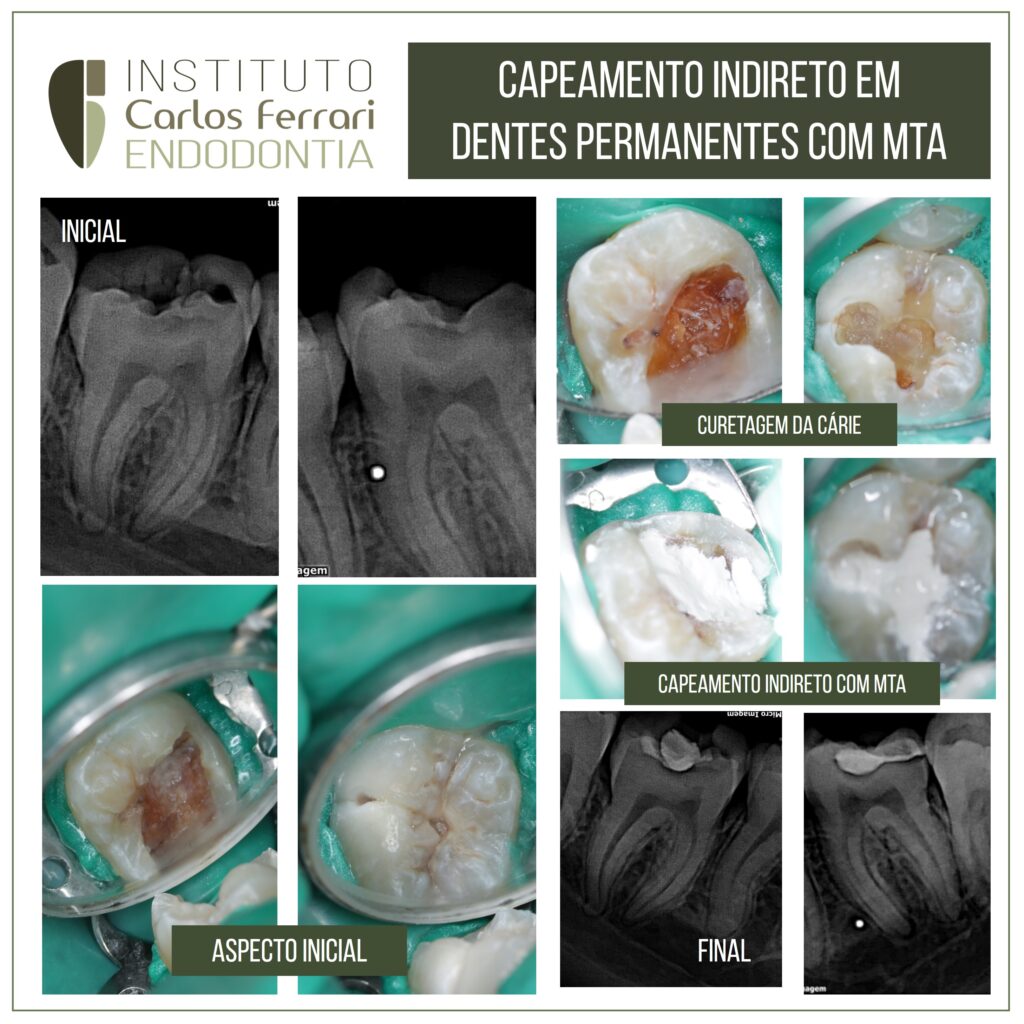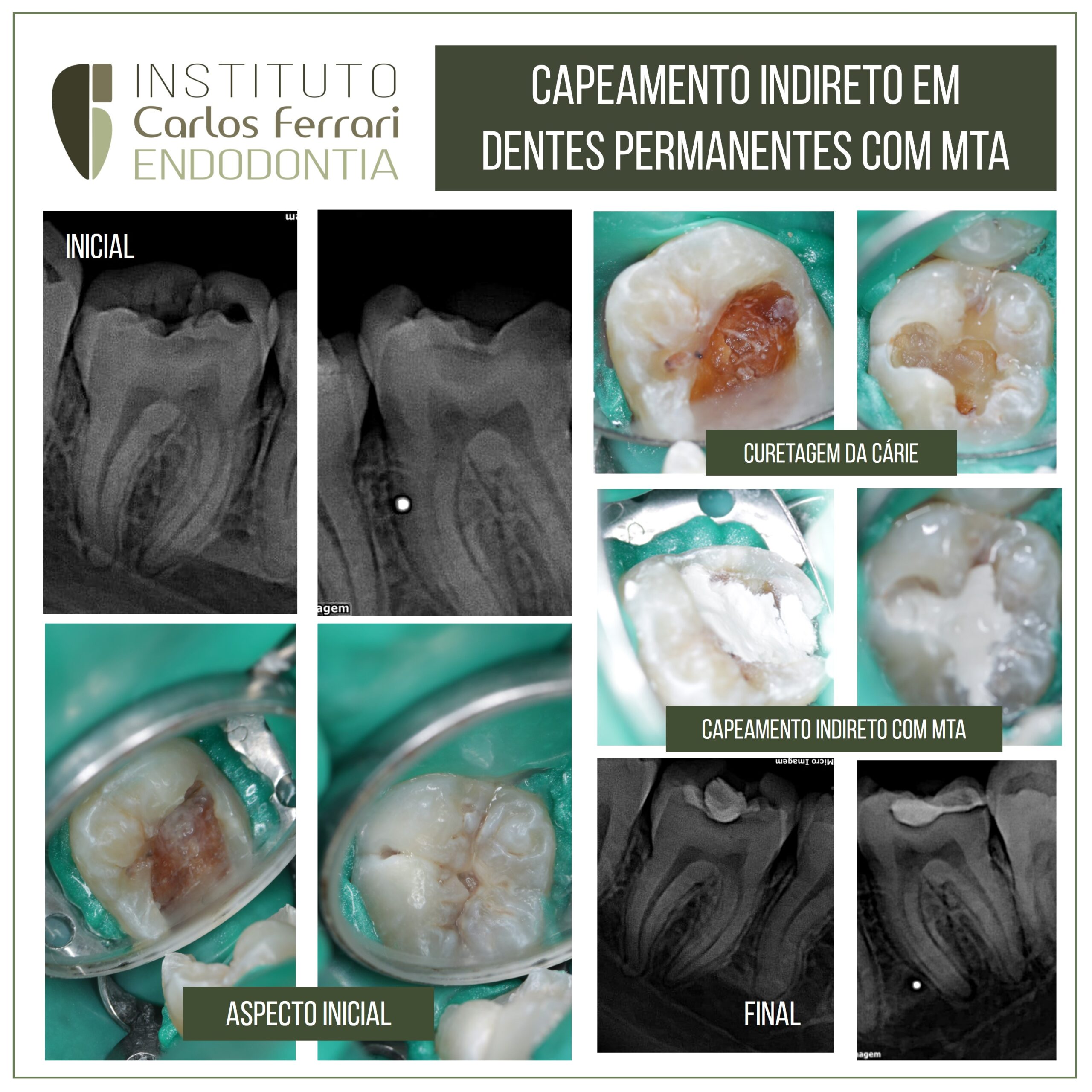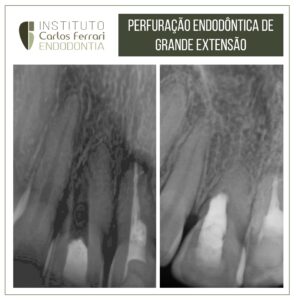Indirect pulp capping with bioceramic in incomplete rhizogenesis. A 15-year-old patient came to the clinic for evaluation and possible endodontic treatment of teeth 37 and 47. Clinical and radiographic examination showed extensive caries, but apparently not yet reaching the pulp chamber. The patient did not report any symptoms and the teeth responded to thermal tests with a slight increase in relation to the adjacent teeth.
Selective removal of the caries and indirect pulp capping with MTA repair were then carried out, followed by sealing with resin and indication for restoration.
Case carried out by student Zayli Rodriguez, from class 10 of the endodontics specialization course at HPG Brasília.

Direct pulpal capping with MTA:
Endodontic therapies in deciduous teeth aim to maintain these elements with the purpose of maintaining space in the dental arch. Among the conservative endodontic therapies, direct pulpal protection stands out. This treatment is a procedure in which an exposed dental pulp is covered with a drug or material that protects it from further injury, allowing its repair. This procedure is performed when there is accidental microexposure of the pulp, according to certain criteria, such as: absence of spontaneous painful symptomatology, absence of periapical lesion, young dental age, and physiological rhizolysis of less than one third of the root. Currently, direct pulp protection is a proven effective procedure.
In a study with dog teeth, Faraco Jr, Holland demonstrated, through histological analysis, the formation of a dentin bridge in 84.6% of the dental elements after direct pulp protection. In this context, the material used in contact with the pulp remnant is relevant, since it is necessary to maintain the integrity of the root pulp. Among these materials, the iodoformed pastes, calcium hydroxide pastes and Mineral Trioxide Aggregate (MTA) stand out.
In: Fidalgo et al. Rev Odontol UNESP, Araraquara, v. 38, n. 6, p. 383-87, nov./dez. 2009
https://www.youtube.com/watch?v=GoV4JybRpi8&list=PLek9BAmgAJf8K1ImjjDiQP9pzj_IGr4fi





